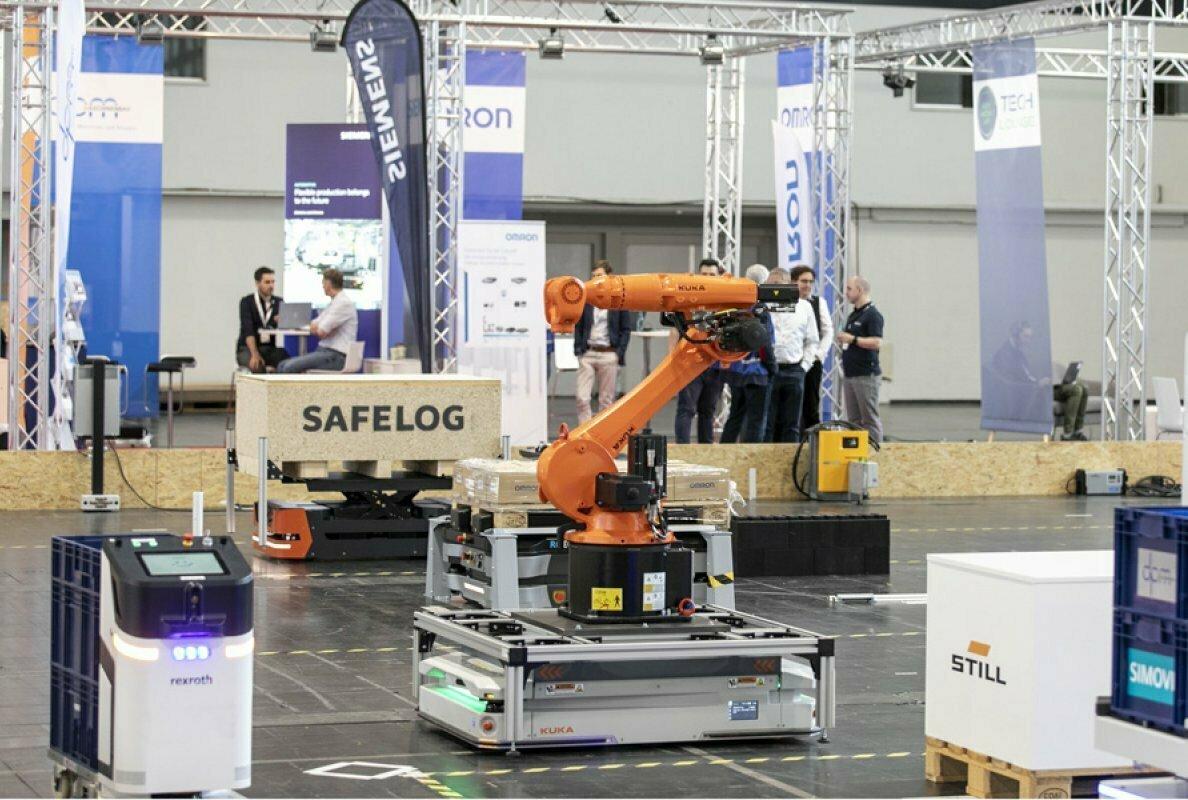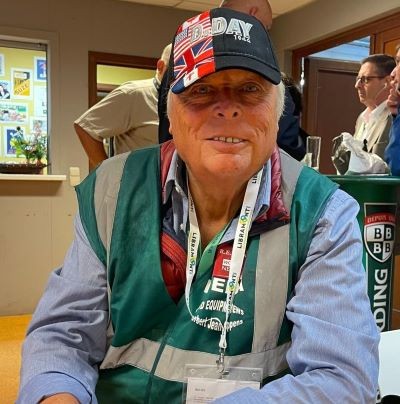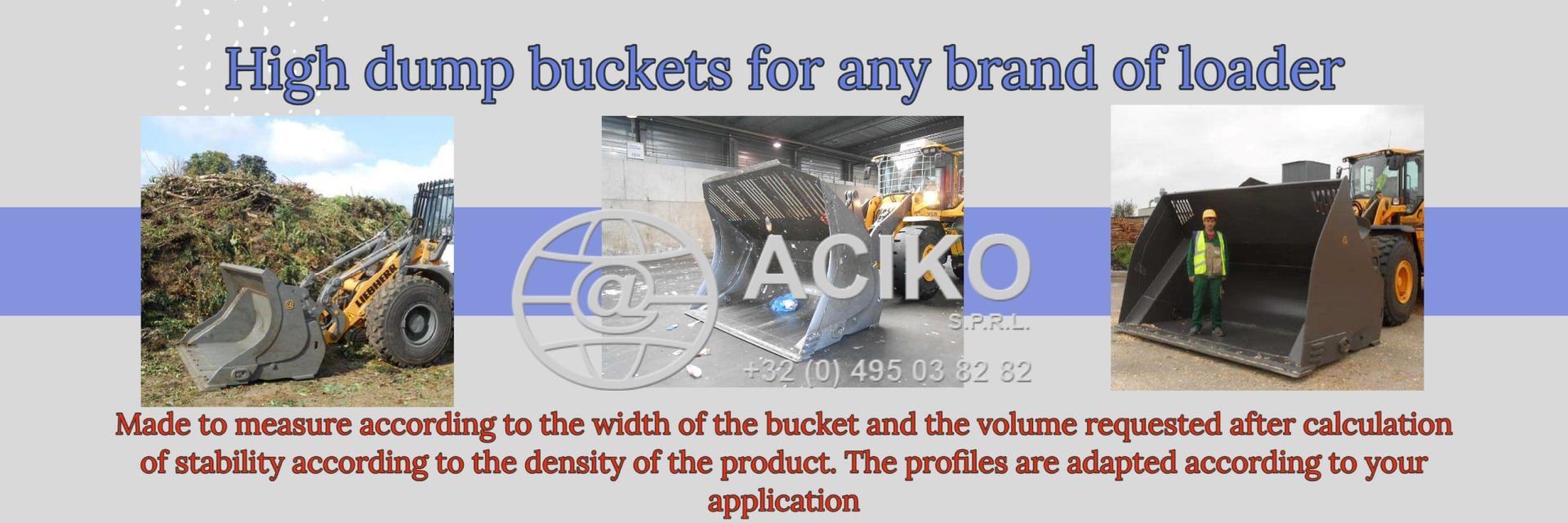R.E.News future Technology-New version of VDA 5050 published
 28/08/24-FR-English-NL-footer
28/08/24-FR-English-NL-footer
Nouvelle version de VDA 5050 publiée
 At the AGV Mesh-Up in April 2024, a total of ten companies demonstrated the functionality of VDA 5050 with a mixed fleet of mobile robots. IMAGE SOURCE: TEST CAMP INTRALOGISTICS
At the AGV Mesh-Up in April 2024, a total of ten companies demonstrated the functionality of VDA 5050 with a mixed fleet of mobile robots. IMAGE SOURCE: TEST CAMP INTRALOGISTICS
La nouvelle version de VDA 5050, 2.1.0, améliore la communication des robots mobiles avec une plus grande autonomie et intègre le transport de matériaux en interne.
Les principales mises à jour comprennent l'introduction de couloirs pour éviter les obstacles, des illustrations révisées pour plus de clarté et la suppression d'ambiguïtés mineures.
VDA 5050 est désormais publié exclusivement en anglais et reste rétrocompatible avec la version 2.0.0.
La mise à jour est disponible publiquement sur GitHub, où les utilisateurs peuvent télécharger les logiciels associés et fournir des commentaires pour le développement en cours.
La VDA et la VDMA, soutenues par l'Institut de technologie de Karlsruhe, développent en permanence VDA 5050 depuis 2019 pour répondre aux besoins du marché et aux avancées techniques.
Les leaders du secteur comme BMW et Schaeffler soulignent l'importance de VDA 5050 pour intégrer les AGV et bénéficier des dernières innovations intralogistiques.
Sous la direction du projet VDA et VDMA : la nouvelle version de l'interface de communication VDA 5050 implémente des améliorations importantes pour les robots mobiles avec un degré d'autonomie plus élevé ainsi que les retours du public GitHub.
L'Association allemande de l'industrie automobile (VDA) et l'Association de manutention et d'intralogistique VDMA ont publié une mise à jour de VDA 5050. La version 2.1.0 intègre le transport de matériaux en interne avec divers robots mobiles et une commande principale. Grâce au protocole d'interface ouvert, la mise en service et l'exploitation de flottes hétérogènes en fonctionnement parallèle peuvent être mises en œuvre de manière flexible et en fonction des besoins. VDA 5050 standardise la communication entre le système de contrôle et les véhicules.
Un changement important par rapport à la version précédente 2.0.0 est l'introduction de couloirs pour les robots mobiles dans lesquels ils peuvent librement éviter les obstacles ou similaires. Les véhicules avec un degré d'autonomie plus élevé peuvent ainsi mieux utiliser leurs capacités de navigation. De plus, les illustrations contenues dans le document ont été revues pour une meilleure compréhension et diverses ambiguïtés mineures ont été supprimées. Pour la première fois, la norme VDA 5050 est publiée exclusivement en anglais. La version est rétrocompatible avec la version 2.0.0.
La norme VDA 5050 est disponible au public dans un référentiel GitHub. Les éléments logiciels associés peuvent également y être téléchargés. Dans le forum de discussion, les utilisateurs peuvent apporter leurs commentaires, qui sont régulièrement examinés et discutés par l'équipe centrale VDA 5050 et ainsi intégrés dans le développement ultérieur.
Les personnes derrière la norme VDA 5050 - le groupe de travail commun de la VDMA et de la VDA a lancé la nouvelle version 2.1.0 sous la direction technique de l'Institut des systèmes de manutention et de logistique (IFL) de l'Institut de technologie de Karlsruhe.
Depuis la publication de la première version du protocole d'interface en 2019, les fournisseurs et utilisateurs intralogistiques, notamment issus de l'industrie automobile et des sous-traitants, travaillent intensément au développement et à l'optimisation de la norme VDA 5050. Le groupe de travail commun de la VDA et de la VDMA, soutenu par l'Institut des systèmes de manutention et de logistique (IFL) de l'Institut de technologie de Karlsruhe (KIT), discute régulièrement des extensions et des adaptations souhaitables pour l'interface. Par exemple, les caractéristiques des robots mobiles dotés d'une plus grande autonomie jouent un rôle de plus en plus important dans la conception future de la norme VDA 5050.
Marcus Bollig, directeur général de la VDA :
« En tant que « chef d'orchestre de l'atelier », l'interface VDA 5050 est un moteur de concurrence et de compétitivité. Avec la mise à jour de la norme VDA 2.1.0 qui vient d'être publiée, elle continue d'être un pionnier sur la voie de l'automatisation de l'atelier et un moteur de processus plus efficaces, d'une plus grande sécurité et d'une mise en œuvre durable des véhicules à guidage automatique. »
Sascha Schmel, directeur général de l'association VDMA Materials Handling and Intralogistics :
« La norme VDA 5050 a été continuellement développée au cours des cinq dernières années en fonction des exigences spécifiques du marché et de l'expérience acquise dans le cadre de projets. Cette approche ascendante restera bien entendu le credo à l'avenir. La norme VDA 5050 évolue en fonction des possibilités techniques des véhicules et des processus de transport internes des industries utilisatrices. »
Andreas Steiner, responsable des innovations logistiques d'industrialisation et de la planification logistique pour les usines du groupe BMW à Dingolfing et Debrecen :
"Depuis sa création, le groupe BMW participe activement au groupe de projet pour le développement de la norme VDA 5050, ce qui se traduit notamment par le fait qu'il préside le groupe de travail depuis plusieurs années. Les résultats se répercutent directement sur le développement ultérieur de la logistique au sein du groupe BMW. Outre les intégrations existantes de différents types de robots de transport de différents fabricants basées sur la norme VDA 5050, d'autres véhicules à guidage automatique (AGV) sont actuellement en cours d'intégration chez BMW. L'utilisation de la norme VDA 5050 est une condition préalable obligatoire à cet effet. L'utilisation de la norme VDA 5050 permet au groupe BMW d'intégrer de nouveaux types d'AGV beaucoup plus rapidement, avec moins de risques et à moindre coût. La publication actuelle représente une autre étape importante sur la voie d'une norme VDA 5050 complète."
Tim Menapace, architecte logiciel en informatique opérationnelle chez Schaeffler :
« La norme VDA 5050 permet au groupe Schaeffler de toujours bénéficier des dernières innovations dans le domaine de l'intralogistique, quel que soit le fabricant. Avec la dernière version 2.1.0, la norme franchit une nouvelle étape et permet de mieux exploiter les fonctionnalités des véhicules autonomes. En tant que fournisseur mondial de l'industrie automobile et industrielle, le groupe Schaeffler s'efforce toujours d'utiliser et de contribuer à des normes innovantes. La norme VDA 5050 bénéficie donc également du soutien total de Schaeffler. »
NJC.© VDA
-----------------------------------------------------------------------------------------------------------------
 28/08/24-English
28/08/24-English
New version of VDA 5050 published
 At the AGV Mesh-Up in April 2024, a total of ten companies demonstrated the functionality of VDA 5050 with a mixed fleet of mobile robots. IMAGE SOURCE: TEST CAMP INTRALOGISTICS
At the AGV Mesh-Up in April 2024, a total of ten companies demonstrated the functionality of VDA 5050 with a mixed fleet of mobile robots. IMAGE SOURCE: TEST CAMP INTRALOGISTICS
The new version of VDA 5050, 2.1.0, enhances communication for mobile robots with higher autonomy and integrates in-house material transportation.
Key updates include the introduction of corridors for obstacle avoidance, revised illustrations for clarity, and removing minor ambiguities.
VDA 5050 is now published exclusively in English and remains backward compatible with version 2.0.0.
The update is publicly available on GitHub, where users can download associated software and provide feedback for ongoing development.
The VDA and VDMA, supported by the Karlsruhe Institute of Technology, have been continuously developing VDA 5050 since 2019 to meet market needs and technical advancements.
Industry leaders like BMW and Schaeffler highlight the importance of VDA 5050 in integrating AGVs and benefiting from the latest intralogistics innovations.
Under the project management of VDA and VDMA: The new version of the VDA 5050 communication interface implements important enhancements for mobile robots with a higher degree of autonomy as well as feedback from the public GitHub.
The German Association of the Automotive Industry (VDA) and the VDMA Materials Handling and Intralogistics Association have published an update of VDA 5050. Version 2.1.0 integrates in-house material transportation with various mobile robots and a master control. With the help of the open interface protocol, the commissioning and operation of heterogeneous fleets in parallel operation can be implemented flexibly and in line with requirements. VDA 5050 standardizes the communication between the control system and the vehicles.
A significant change compared to the previous version 2.0.0 is the introduction of corridors for mobile robots in which they can freely avoid obstacles or similar. Vehicles with a higher degree of autonomy can thus make better use of their navigation capabilities. In addition, the illustrations contained in the document have been revised for easier and better understanding and various minor ambiguities have been removed. For the first time, VDA 5050 is being published exclusively in English. The version is backwards compatible to 2.0.0.
VDA 5050 is publicly available in a GitHub repository. Associated software elements can also be downloaded there. In the discussion forum, users can contribute their feedback, which is regularly reviewed and discussed by the VDA 5050 core team and thus incorporated into further development.
The people behind VDA 5050 - the joint working group of VDMA and VDA has launched the new version 2.1.0 under the technical leadership of the Institute of Materials Handling and Logistics Systems (IFL) at the Karlsruhe Institute of Technology.
Since the publication of the first version of the interface protocol in 2019, intralogistics providers and users, particularly from the automotive and supplier industry, have been working intensively on the further development and optimization of VDA 5050. The joint working group of VDA and VDMA, which is supported by the Institute for Materials Handling and Logistics Systems (IFL) at the Karlsruhe Institute of Technology (KIT), regularly discusses which extensions and adaptations would be desirable for the interface. For example, the characteristics of mobile robots with greater autonomy are playing an increasingly important role in the future design of VDA 5050.
VDA Managing Director Marcus Bollig:
"As the 'conductor of the factory floor', the VDA 5050 interface is a driver of competition and competitiveness. With the update to VDA 2.1.0 that has now been published, it continues to be a pioneer on the road to factory floor automation and a driver for more efficient processes, greater safety and sustainable implementation of automated guided vehicles."
Sascha Schmel, Managing Director of the VDMA Materials Handling and Intralogistics Association:
"VDA 5050 has been continuously developed over the last five years in line with specific market requirements and project experience. This bottom-up approach will of course remain the credo in the future. VDA 5050 changes with the technical possibilities of the vehicles and with the internal transport processes of the user industries."
Andreas Steiner, Head of Industrialisation Logistics Innovations and Logistics Planning for the BMW Group plants in Dingolfing and Debrecen:
"The BMW Group has played an active role in the project group for the development of VDA 5050 since it was founded, which is expressed in particular by the fact that it has chaired the working group for several years. The results flow directly into the further development of logistics at the BMW Group. In addition to existing integrations of various types of transport robots from different manufacturers based on VDA 5050, further automated guided vehicles (AGVs) are currently being integrated at BMW. The use of VDA 5050 is a mandatory prerequisite for this. The use of VDA 5050 enables the BMW Group to integrate new AGV types significantly faster, with less risk and at lower cost. The current publication represents another important milestone on the way to a fully comprehensive VDA 5050."
Tim Menapace, Software Architect in Operations IT at Schaeffler:
"VDA 5050 enables the Schaeffler Group to always benefit from the latest innovations in the field of intralogistics, regardless of the manufacturer. With the latest version 2.1.0, the standard takes another step forward and makes it possible to make better use of autonomous vehicle functionalities. As a global automotive and industrial supplier, the Schaeffler Group always strives to use and contribute to innovative standards. The VDA 5050 therefore also has the full support of Schaeffler."
NJC.© VDA
--------------------------------------------------------------------------------------------------------------------
 28/08/24-NL
28/08/24-NL
Nieuwe versie van VDA 5050 gepubliceerd
 At the AGV Mesh-Up in April 2024, a total of ten companies demonstrated the functionality of VDA 5050 with a mixed fleet of mobile robots. IMAGE SOURCE: TEST CAMP INTRALOGISTICS
At the AGV Mesh-Up in April 2024, a total of ten companies demonstrated the functionality of VDA 5050 with a mixed fleet of mobile robots. IMAGE SOURCE: TEST CAMP INTRALOGISTICS
De nieuwe versie van VDA 5050, 2.1.0, verbetert de communicatie voor mobiele robots met een hogere autonomie en integreert intern materiaaltransport.
Belangrijke updates zijn onder meer de introductie van corridors voor het vermijden van obstakels, herziene illustraties voor duidelijkheid en het verwijderen van kleine dubbelzinnigheden.
VDA 5050 is nu uitsluitend in het Engels gepubliceerd en blijft achterwaarts compatibel met versie 2.0.0.
De update is openbaar beschikbaar op GitHub, waar gebruikers bijbehorende software kunnen downloaden en feedback kunnen geven voor doorlopende ontwikkeling.
De VDA en VDMA, ondersteund door het Karlsruhe Institute of Technology, ontwikkelen VDA 5050 sinds 2019 continu om te voldoen aan de behoeften van de markt en technische vooruitgang.
Brancheleiders zoals BMW en Schaeffler benadrukken het belang van VDA 5050 bij het integreren van AGV's en het profiteren van de nieuwste intralogistieke innovaties.
Onder projectmanagement van VDA en VDMA: De nieuwe versie van de VDA 5050-communicatie-interface implementeert belangrijke verbeteringen voor mobiele robots met een hogere mate van autonomie en feedback van de openbare GitHub.
De Duitse Vereniging van de Automobielindustrie (VDA) en de VDMA Materials Handling and Intralogistics Association hebben een update van VDA 5050 gepubliceerd. Versie 2.1.0 integreert intern materiaaltransport met verschillende mobiele robots en een masterbesturing. Met behulp van het open interfaceprotocol kan de inbedrijfstelling en bediening van heterogene vloten in parallelbedrijf flexibel en in overeenstemming met de vereisten worden geïmplementeerd. VDA 5050 standaardiseert de communicatie tussen het besturingssysteem en de voertuigen.
Een belangrijke wijziging ten opzichte van de vorige versie 2.0.0 is de introductie van corridors voor mobiele robots waarin ze obstakels of dergelijke vrij kunnen vermijden. Voertuigen met een hogere mate van autonomie kunnen zo hun navigatiemogelijkheden beter benutten. Bovendien zijn de illustraties in het document herzien voor een gemakkelijker en beter begrip en zijn verschillende kleine onduidelijkheden verwijderd. Voor het eerst wordt VDA 5050 uitsluitend in het Engels gepubliceerd. De versie is achterwaarts compatibel met 2.0.0.
VDA 5050 is openbaar beschikbaar in een GitHub-repository. Bijbehorende software-elementen kunnen daar ook worden gedownload. In het discussieforum kunnen gebruikers hun feedback geven, die regelmatig wordt beoordeeld en besproken door het VDA 5050-kernteam en zo wordt opgenomen in verdere ontwikkeling.
De mensen achter VDA 5050 - de gezamenlijke werkgroep van VDMA en VDA heeft de nieuwe versie 2.1.0 gelanceerd onder de technische leiding van het Institute of Materials Handling and Logistics Systems (IFL) van het Karlsruhe Institute of Technology.
Sinds de publicatie van de eerste versie van het interfaceprotocol in 2019 werken intralogistieke aanbieders en gebruikers, met name uit de automobiel- en toeleveringsindustrie, intensief aan de verdere ontwikkeling en optimalisatie van VDA 5050. De gezamenlijke werkgroep van VDA en VDMA, die wordt ondersteund door het Institute for Materials Handling and Logistics Systems (IFL) van het Karlsruhe Institute of Technology (KIT), bespreekt regelmatig welke uitbreidingen en aanpassingen wenselijk zouden zijn voor de interface. Zo spelen de kenmerken van mobiele robots met een grotere autonomie een steeds belangrijkere rol in het toekomstige ontwerp van VDA 5050.
VDA-directeur Marcus Bollig:
"Als 'dirigent van de fabrieksvloer' is de VDA 5050-interface een aanjager van concurrentie en concurrentievermogen. Met de nu gepubliceerde update naar VDA 2.1.0 blijft het een pionier op weg naar automatisering op de fabrieksvloer en een aanjager voor efficiëntere processen, meer veiligheid en duurzame implementatie van automatisch geleide voertuigen."
Sascha Schmel, Managing Director van de VDMA Materials Handling and Intralogistics Association:
"VDA 5050 is de afgelopen vijf jaar continu ontwikkeld in lijn met specifieke marktvereisten en projectervaring. Deze bottom-upbenadering zal natuurlijk ook in de toekomst het credo blijven. VDA 5050 verandert met de technische mogelijkheden van de voertuigen en met de interne transportprocessen van de gebruikersindustrieën."
Andreas Steiner, Hoofd Industrialisatie Logistiek Innovaties en Logistieke Planning voor de BMW Group-fabrieken in Dingolfing en Debrecen:
"De BMW Group heeft sinds de oprichting een actieve rol gespeeld in de projectgroep voor de ontwikkeling van VDA 5050, wat met name tot uiting komt in het feit dat zij al enkele jaren voorzitter is van de werkgroep. De resultaten vloeien direct door naar de verdere ontwikkeling van de logistiek bij de BMW Group. Naast de bestaande integraties van verschillende typen transportrobots van verschillende fabrikanten op basis van VDA 5050, worden er momenteel bij BMW nog meer automatisch geleide voertuigen (AGV's) geïntegreerd. Het gebruik van VDA 5050 is hiervoor een verplichte voorwaarde. Het gebruik van VDA 5050 stelt de BMW Group in staat om nieuwe AGV-typen aanzienlijk sneller, met minder risico en tegen lagere kosten te integreren. De huidige publicatie vormt een andere belangrijke mijlpaal op weg naar een volledig omvattende VDA 5050."
Tim Menapace, Software Architect in Operations IT bij Schaeffler:
"VDA 5050 stelt de Schaeffler Group in staat om altijd te profiteren van de nieuwste innovaties op het gebied van intralogistiek, ongeacht de fabrikant. Met de nieuwste versie 2.1.0 zet de standaard een volgende stap en maakt het mogelijk om autonome voertuigfunctionaliteiten beter te benutten. Als wereldwijde automotive en industriële leverancier streeft de Schaeffler Group er altijd naar om innovatieve standaarden te gebruiken en hieraan bij te dragen. De VDA 5050 heeft daarom ook de volledige ondersteuning van Schaeffler."
NJC.© VDA
------------------------------------------------------------------------------------------------------------------
Date de dernière mise à jour : 27/08/2024

















